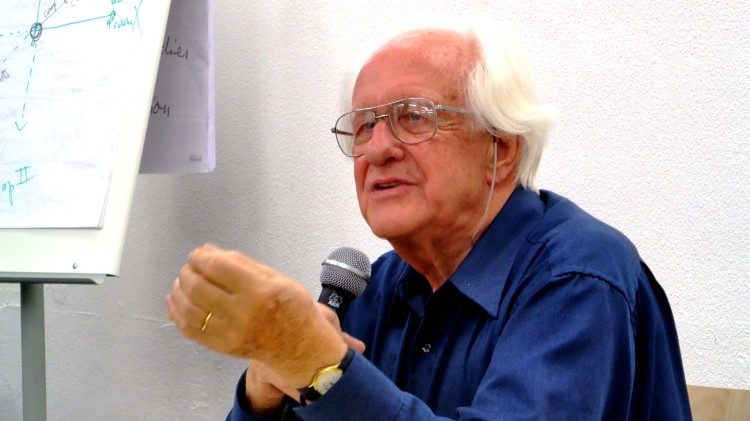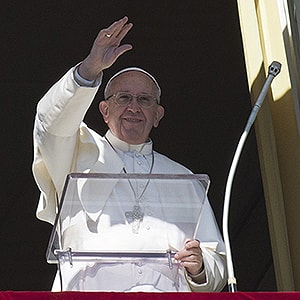‘Peace Journalism’ To Help Build a More Peaceful World
TMS PEACE JOURNALISM, 14 May 2018
Vatican News – TRANSCEND Media Service
8 May 2018 – Every year on the Sunday before Pentecost the Church marks World Communications Day to celebrate the achievements of the media and to focus of how communications can best be used to promote gospel values.
In the lead-up to this Sunday’s 52nd World Communications Day, Pope Francis released a message entitled “The Truth will set you free. Fake news and journalism for peace.”
But what is peace journalism?
Originally conceived some 60 years ago by the eminent peace scholar, Johan Galtung, peace journalism is a model and a source of practical options for journalists.
Galtung himself defined peace journalism as “when editors and reporters make choices – of what to report, and how to report it – that create opportunities for society at large to consider and value non-violent responses to conflict.”
Speaking to Vatican News’s Alessandro Gisotti, Galtung explained how he elaborated the concept of “peace journalism” and expressed his gratitude for Pope Francis’ attention and support.
The idea at the roots of peace journalism
Galtung explained that simply by studying and analyzing the way news was reported in Norwegian newspapers during the 1960s, “and this was when we were talking about Cuba and Congo” he realized it attained to four conclusions: the news had to be negative (it had to have something to do with war and violence); it had to be ‘actor oriented’ not structure – there had to be someone to blame; it had to affect our countries (élite countries); and in particular it had affect important people in important countries. So, he explained, take any event and see if it meets one or all of these four criteria: at this point, it’s easy for it to become news.
Sixty years since Galtung elaborated the concept of “peace journalism” he spoke about what it means today and pointed out that in the meantime he has focused on the concept of peace and come to the conclusion that there is a distinction between “positive” peace and “negative” peace.
“Peace journalism is split into two: ‘negative’ peace journalism, which tries to find solutions to conflicts in order to reduce violence; and ‘positive’ peace journalism, which wants to explore the possibility of more positive cooperation. In other words, the first focuses on the negative aspect and the second on the positive aspect” he said.
Pope Francis and ‘peace journalism’
Pope Francis dedicated his Message for World Communications Day 2018 to “peace journalism” and Galtung expressed his gratitude for this.
He said he believes that Pope Francis is one of the greatest positive figures of our time and “obviously I am deeply struck by his stance on a concept such as “peace journalism” and find his support a great boost.
Commenting on how Pope Francis, in his message, affirms that “peace is the true news”, Galtung answers the question “Why is it so difficult for the media to inform about peace? Why does it appear only to be interested only in war?”
According to Galtung this is “Because they don’t know how to write about it, they don’t even know how to conceptualize peace!”
He noted there was a remarkable case in Denmark when suddenly, people started talking about ‘reconciliation’, about reconciliation with regard to important events that had taken place in Denmark in the past and the journalists didn’t write about it because they did not even understand it!
He also expressed his opinion that women journalists are generally more attentive and more capable of putting “peace journalism” into practice than their male colleagues.
The need to train journalists
Galtung concluded stressing that the culture of “Peace Journalism” has its roots in the education and training of journalists, and in not taking for granted the guidelines set by some of the major schools of journalism in the world today, in order to break away from a negative model and introduce the concept of “Peace Journalism”.
Listen to the interview with Professor Johan Galtung:
Go to Original – vaticannews.va
DISCLAIMER: The statements, views and opinions expressed in pieces republished here are solely those of the authors and do not necessarily represent those of TMS. In accordance with title 17 U.S.C. section 107, this material is distributed without profit to those who have expressed a prior interest in receiving the included information for research and educational purposes. TMS has no affiliation whatsoever with the originator of this article nor is TMS endorsed or sponsored by the originator. “GO TO ORIGINAL” links are provided as a convenience to our readers and allow for verification of authenticity. However, as originating pages are often updated by their originating host sites, the versions posted may not match the versions our readers view when clicking the “GO TO ORIGINAL” links. This site contains copyrighted material the use of which has not always been specifically authorized by the copyright owner. We are making such material available in our efforts to advance understanding of environmental, political, human rights, economic, democracy, scientific, and social justice issues, etc. We believe this constitutes a ‘fair use’ of any such copyrighted material as provided for in section 107 of the US Copyright Law. In accordance with Title 17 U.S.C. Section 107, the material on this site is distributed without profit to those who have expressed a prior interest in receiving the included information for research and educational purposes. For more information go to: http://www.law.cornell.edu/uscode/17/107.shtml. If you wish to use copyrighted material from this site for purposes of your own that go beyond ‘fair use’, you must obtain permission from the copyright owner.
One Response to “‘Peace Journalism’ To Help Build a More Peaceful World”
Read more
Click here to go to the current weekly digest or pick another article:
TMS PEACE JOURNALISM:


The importance of the press for promoting peace rather than war was a frequent topic in the annual conferences of the international peace movement that were being coordinated by the International Peace Bureau in the 1890s and throughout the years leading up to World War 1. The very expressions ‘peace journalism’ and ‘peace journalist’ were used as early as 1901, at least in the German language (Friedensjournalismus, Friedensjournalist). A key figure is the Austrian journalist and publisher Alfred H. Fried (1864-1921) whose work in the area was honoured with the Nobel Peace Prize in 1911. He was a close collaborator of Bertha von Suttner (1843-1914), the first woman to receive the same prize (1905) who is probably the first female peace journalist.
Andreas Landl, a peace journalist in Vienna today, contributed a chapter on Fried as a pioneer of peace journalism in a recent volume with essays on him (Alfred Hermann Fried: “Organisiert die Welt!”, ed. Guido Gruenewald. Bremen: Donat Verlag, 2016). See also my article, ‘Alfred H. Fried: Forgotten Peace Journalism Pioneer’ in Peace Review, 29/4, October-December 2017.